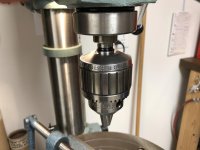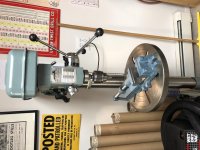kbm6893
Member
I know they've had a left handed thread since the late 50's. One of my revolvers is a K38 from early 1957. The rest are all 70's-early 90's.
So if it am looking down the Cylinder as if the gun was pointed at me, and the ejector rod is pointing at me, to unscrew the rod for the newer revolvers, I'd have to turn the rod clockwise. Is that clockwise from the front of the cylinder as the rod faces me?
It seems easier to turn the cylinder while holding the rod. So padded vise or padded vice grip, and then turn the cylinder right or left?
And which way for my K38? We're they still using right hand threads on pre model number guns?
So if it am looking down the Cylinder as if the gun was pointed at me, and the ejector rod is pointing at me, to unscrew the rod for the newer revolvers, I'd have to turn the rod clockwise. Is that clockwise from the front of the cylinder as the rod faces me?
It seems easier to turn the cylinder while holding the rod. So padded vise or padded vice grip, and then turn the cylinder right or left?
And which way for my K38? We're they still using right hand threads on pre model number guns?
Last edited:



